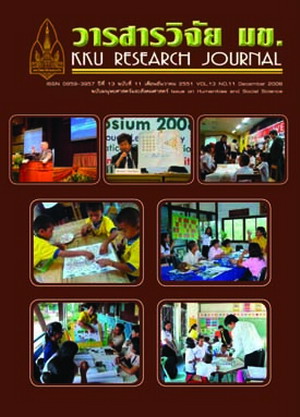Exploring the state of teaching and learning about sound in higher secondary schools in Trang (Thai)
Main Article Content
Abstract
The objective of this survey was to explore the state of teaching and learning about sound in higher secondary schools in Trang Educational Service Area Offices 1 and 2. The subjects were 28 physics teachers who taught about sound. The instrument was a Teacher Teaching Practice Questionnaire which included teachersÕ background, curricular context, teaching methods, instructional behavior, learning materials and resources, measurement and evaluation, and teachersÕ needs and problems. Seventeen questionnaires were returned. Data were analyzed to determine frequencies of teachersÕ responses. The results showed that a majority of teachers had a bachelor degree related to physics, taught sound by covering content prescribed in the traditional curriculum, and used a variety of teaching methods, learning materials and resources, measurement and evaluation. The lecture approach, however, was the most dominant teaching method. Most teachers used hardcopy, simple experimental equipment, library and internet as learning materials and resources. Most teachers regarded science knowledge as the most important learning outcome and used assignments and tests to measure and evaluate student learning. Some teachers referred to the studentsÕ lack of mathematic skills and the lack of equipment as the primary obstacles in their teaching of sound.

